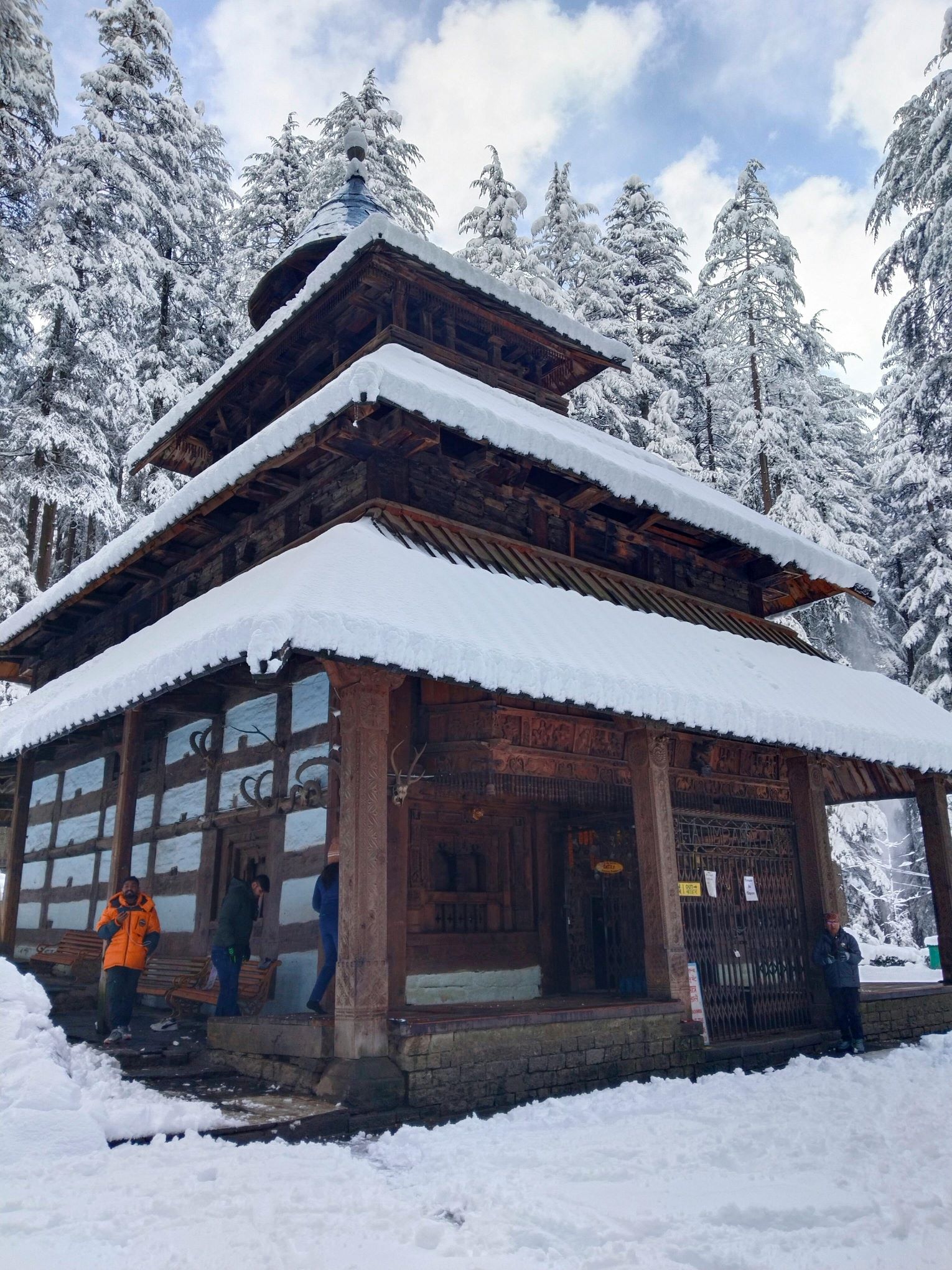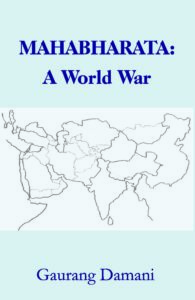
In the popular epic Mahabharata, Kunti and the young Pandava brothers survived the Lakshya griha fire, and went south. Deep in the woods, Bhima killed an aggressive Rakshasa Hidimba. His sister Hidimbaa pleaded with Kunti to convince Bhima to marry her. Bhima’s condition was that they cannot stay in the jungle forever like a Rakshasa. Hidimbaa agreed.
After some time, she conceived and delivered a baby the same day. Within an hour of being born, the child grew to become a broad-chested strong giant. Their son was named Ghatotkacha as he was born with a bald head shaped like a water pot. He was ferocious to behold but became a favourite of the Pandava-s. Hidimbaa realized that it is time to separate. Ghatotkacha promised to appear when remembered and went northwards with his mother.
As per local folklore:
- Bhima married Hidimbaa at Hidimbavan near Dakor in Gujarat state
- Bhima and Hidimbaa sported at the Chitradurg hill in Karnataka state where there is a Hidambeshwar temple
- Along with Bhima, the idol of Ghatotkacha is worshipped at his birthplace in Bhimguda in Janan village of Kutch region
- Hidimbaa is one of the most important deities even today in present-day Manali of Himachal Pradesh state. There is a Ghatotkacha shrine right opposite her temple
Later, the Pandava-s returned and established the powerful kingdom around Indraprastha. King Yudhishthira lost the gambling match, consigning the Pandava-s and Draupadi to a 13 years exile. They embarked on a pilgrimage to the east where River Ganga meets the sea, then south to Rameshwaram, and west to Somanatha. In the north, Draupadi could not trek the rugged mountains towards Gandha-maadana near Badrinatha. Bhima remembered Ghatotkacha who appeared with his other Rakshasa followers. They flew the pilgrims to the delightful Himalayan region where they lived in peace for a few years.
It seems that Bhima was flown to the northeast. As per the local beliefs of Nagaland state in northeast Bhaarata, Bhima and Ghatotkacha played chess at the Kachari Rajbari Park. There are huge stone chess pieces at this archaeological site in Hidimbapur (also called Dimapur city).
As per local folklore of Assam state, Bhima worshipped at Bhairabkunda near Udalguri. It is believed that Hidimbaa resided in Khaspur in Cachar district. Ghatotkacha’s son Sasempha founded the ancient kingdom of Kachari (also called the Hidimbaa kingdom) and the dynasty’s kings were called Hidimbeshwar.
From Badrinatha, the Pandava-s worshipped at Mt Kailasha. They travelled through the regions of Kirata (Tibet), China, and Tukhara (East Turkestan), and returned to the plains. As the 13th year of their exile approached, the Pandava-s bid goodbye to Ghatotkacha.
After their exile term, Duryodhana, the wicked Kaurava refused to return the Pandava kingdom. A combat became inevitable wherein the Kaurava-s assembled 11 akshauhini-s (army regiments) to 7 for the Pandava-s. During the Mahabharata war, Ghatotkacha and his followers supported the Pandava-s. The diverse Kirata-s (Indo-Mongoloids) of Northeast Bhaarata fought on both the sides. The Druhyu-s of Tripura state sided with the Kaurava-s. The war ended with a victory of good over evil.
After the war, Arjuna’s son with Chitrangada, Babhruvahana had descendants who ruled the northeastern state of Manipura.
Another geographical legacy of Mahabharata is that of the Nishada-s. Dronacharya had taken their King Ekalavya’s right thumb as Guru-dakshina during his student days at Gurugram. Even today, some tribals of Chhattisgarh and Madhya Pradesh states pull the bowstring with their 2nd and 3rd finger but not the thumb. Same for the Khasi people of Meghalaya state in the northeast. Thus, Mahabharata shows that travel was seamless across ancient Bhaarata.
This article is an excerpt from the book ‘Mahabharata: A World War’ by Gaurang Damani. The book is available at Padhega India and other online stores.
This article first appeared on the Hindu Post website.

